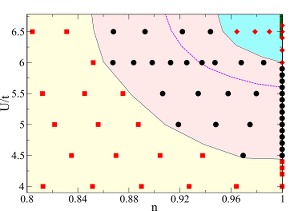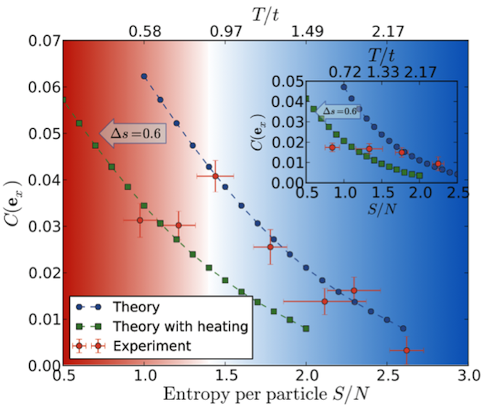MPS Awardee Spotlight: Emanuel Gull

Emanuel Gull is director of the Monte Carlo Group of the Simons Collaboration on the Many Electron Problem. Originally from Switzerland, his training included undergraduate and graduate studies at the ETH Zürich, followed by a postdoctoral position at Columbia University. After a stint as a junior group leader at the Max Planck Institute for Complex Systems in Dresden, Germany, he moved to the University of Michigan where he is now assistant professor of physics, leading its Computational Quantum Many-Body Physics Group.


Gull’s research focuses on condensed matter physics — in particular, on material properties, such as the ability to conduct electricity or produce magnetic fields that arise from the quantum mechanical interactions of electrons. Gull’s interest is in developing new methods to calculate the properties of electrons in materials. There are many applications for this research, such as work on solar cells, sensors, batteries and other forms of energy and power.
Understanding such processes might also lead to far greater energy efficiencies. “For example, the fertilizer production process uses iron as a catalyst,” Gull says, “but we don’t really know how it works in detail. Yet this is a large part of the energy that we’re expending. If we can cut down these energy costs, it would be huge.” Gull cited the country’s power grid as a similar example, “the power that comes into Manhattan is guided through superconducting wires, and if we understood this type of physics, we could reduce unnecessary uses of energy.”
While the study of interacting electrons has a long history in physics, interaction effects associated with electrons in the heavier elements has proven especially challenging. “It’s mostly the top part of the periodic table [the lighter elements] that we have managed to make work, which unfortunately is not relevant for the next generation of sensors and materials,” he said. Therefore, the Simons Collaboration on the Many Electron Problem provides an important context for Gull’s research: “Getting numerical methods for many-body theory is really what the collaboration is about, and it’s my main research focus. We’ve really been able to get not just generic trends and behaviors, but actual numbers that we can compare to experiment and crosscheck. We can also compare between different numerical methods.”
Gull’s long-term scientific aim is to develop these methods to the point that quantitative many-body theory will lead to new understanding of the materials important for science and technology.

Above: Sequence of momentum discretization points illustrating gradual increase of resolution in a ‘dynamical cluster approximation’ simulation of the three-dimensional Hubbard model. From Phys. Rev. B 83, 075122 (2011).
- P. F. LeBlanc and Emanuel Gull, “Equation of state of the fermionic two-dimensional Hubbard model,” Phys. Rev. B 88, 155108 (2013).
- Emanuel Gull, Andrew J. Millis, Alexander I. Lichtenstein, Alexey N. Rubtsov, Matthias Troyer and Philipp Werner, “Continuous-time Monte Carlo methods for quantum impurity models,” Rev. Mod. Phys. 83, 349 (2011).


